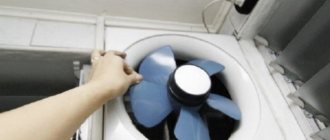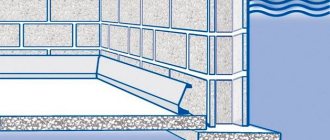Often, after flushing, a noise is heard in the toilet room from water entering the drain tank. If the water noise is quite strong, then most likely the hose is disconnected, which is installed specifically to dampen the sound effect.
Sometimes this rubber tube is simply forgotten to be connected when installing the tank. But there are often cases when it is in place, and unpleasant rattling sounds are heard while filling the tank. To fully understand why the toilet hums when water is filled into the tank, you need to know the general structure and operating principle of the drainage and water supply mechanisms.
Release mechanism with float
Valves of this type are divided by type and method of action:
- Push. These devices are divided, in turn, into categories:
The exhaust valve is single-mode . Such a device is equipped with one key, when pressed, all the liquid is drained from the tank.
Valve with "off" mode. In this mechanism, the initial impact leads to a small flow of liquid into the toilet, and the second one ends the water supply.
The exhaust valve is dual-mode. This device has two buttons on the lid of the tank, and when you press the first button, a certain portion of water comes out, and after pressing the second button, the container is completely emptied.
- Exhaust. With this device, the valve that closes the drain hole is raised by raising the rod.
- Lever. The exhaust system is activated by acting on a lever, which can be located either below or near the toilet.
Regardless of the method of influence and type of device, the operating principle of the components of the release mechanism is the same. It should be taken into account that the shut-off valve is connected to the float via a copper rod or plastic rocker arm.
As soon as the water is drained after use, the float lowers, and at the same time the draft moves the shut-off valve. Through the resulting hole, water quickly begins to flow into the tank. When the float rises completely, the valve, under the influence of traction, closes the hole, as a result of which the water supply to the drain tank stops.
The action plan depends on the cause of the problem
If the problem is in the gasket, you need to remove the shut-off valve and replace the rubber band. There is nothing difficult about this, but you need to choose a suitable replacement in diameter. You can also replace the entire fittings, but this is not justified.
If you don’t have a tube, pick one up at a hardware store that has the appropriate diameter—usually an internal diameter of 5-8 mm. As a last resort, you can attach a cord to the faucet, which will go down along the water discharge line. When water pressure hits the cord, it will descend to the bottom of the tank almost silently.
They deal with plaque by using anti-scale agents for washing machines, or simply pouring a bottle of table vinegar into the tank, adding a few tablespoons of soda and then filling it with water. After 2-3 hours, the water should be washed off - the noise will decrease. Repeat the procedure if necessary. Instead of vinegar and soda, you can use citric acid (50-60 g per tank). Plumbers recommend carrying out such cleaning for preventive purposes every 3-4 months.
If the toilet whistles when the tank fills, you need to clean the passages in the shut-off valve. You'll almost certainly get any rust flakes or other stuck-on solids out of them. To prevent the problem from recurring, install coarse and fine filters at the entrance of the water pipe to the apartment.
As practice shows, doing all these actions helps to cope with the noise of a filling toilet. Do this and it will stop irritating or causing you discomfort.
Drain mechanism or shut-off valve
Such a device is necessary to supply liquid from the flush container to the toilet.
It consists of main parts:
- Release device (button or lever);
- drain siphon.
Most often, a rubber bulb acts as a siphon, which looks like an inverted plunger. This pear-shaped cone-shaped valve reliably shuts off the water in the lower part of the container.
The principle of operation of the drain mechanism is quite simple. When a button or lever is pressed, the lever system comes into action, the bulb rises through the rod and the water is drained into the toilet. At the same time, the shut-off valve opens and water begins to fill.
The sound of a toilet flushing: effective methods of dealing with noise
A completely silent toilet that does not make any sounds during operation is a phenomenon that practically does not occur in nature. But products that notify not only your apartment, but also several neighboring ones about flushing and adding a new portion of water, can be found quite often.
However, you don’t have to put up with such sound. If the toilet tank is noisy, it is quite possible to repair it, or at least reduce the operating volume to acceptable limits.
The process of filling the tank with water can be very loud
Causes of noise
When operating, a toilet can make loud noises for a variety of reasons. So before starting repairs, it’s worth spending some time analyzing the situation in order to understand what we need to fix in the mechanism.
The most common reasons causing this phenomenon include:
- Problems with the operation of the water supply tap . As a rule, the problem is either the gasket or excessive pressure.
- Foreign objects getting into the diffuser of the hose connecting the faucet to the tank.
- Absence or disconnection of a special pipe that connects to the supply valve inside the tank.
The hose that is attached to the supply valve (pictured) sometimes becomes detached
Please note! This problem is typical for models with side water supply.
Products with a bottom connection usually do not have this drawback: they draw water from the bottom up, and therefore do not gurgle in the initial stages.
- Problems with the overflow mechanism.
- Deposition of salts in the tank , which leads to improper functioning of the shut-off valves.
- Damage to the float , as a result of which it begins to fill with water, making characteristic gurgling sounds.
However, these are not the only reasons that cause a loud sound: flushing the toilet itself is not very quiet, and if you press the button with the lid open, the echo will increase the volume significantly. And yet, it is within our power to eliminate unnecessary noise, especially since this can be done quite simply.
Tidying up the taps
Instructions for eliminating excessive volume in the toilet recommend starting with the taps:
- The first method - the simplest - involves reducing the pressure when supplying water. Quite often, it is enough to simply tighten the valve, and the characteristic humming sounds will completely disappear.
These are the taps that need to be repaired first.
- If this does not help, or as a result the tank begins to fill too slowly, you will have to disassemble the tap. To do this, turn off the water in the riser, then dismantle the device and replace the gasket. In most cases, it is worn tires that cause the humming noise, so this procedure helps to cope with the noise.
- The next step is to clean the hose or pipe connecting the water pipe to the tank. To do this, we dismantle this element, remove the fittings from it with installed mesh filters and thoroughly wash all the parts.
Deposits can accumulate inside the hose
Advice! It is better to wash the hose regularly - then the accumulation of lime will not affect the pressure of water entering the tank.
Tank repair
If the taps and hoses are in order, and the volume does not decrease, you need to fix the tank yourself.
For this:
- Remove the lid from the container by unscrewing the drain button.
- We dismantle the shut-off valves and, if necessary, disconnect the tank itself from the toilet flush.
- We monitor the condition of the rubber seal between the tank and the bowl and, if necessary, align or replace it.
When the rubber seal wears out, a characteristic humming sound of water flow may be observed.
- We clean all parts from limescale, paying special attention to moving elements.
- Check the condition of the float. If leaks are detected, we seal the damage or replace the part.
- We thoroughly clean the supply valve, monitoring its performance. If necessary, screw a hose onto the lower pipe of the toilet flush tank valve so that the incoming water is supplied directly to the bottom of the tank, and does not fall onto it from a considerable height with a characteristic gurgling sound.
The fittings need to be sorted out and cleaned of lime and plaque
After this, we collect all the parts, install the tank in place and supply water. As a rule, such prevention helps, if not eliminate the noise completely, then seriously reduce its intensity.
Useful tips
However, even if your toilet is working properly, it may continue to make noise.
And here these recommendations will help:
- First, you should purchase a tight toilet lid. The smaller the gap between the cover and the product itself, the less noise will “break through” to the outside.
- Secondly, you can seal the taps and pipes in a special plasterboard box. And if you attach soundproofing mats from the inside of this box, then you are practically guaranteed silence.
Note! But the wall decoration is responsible for the noise level of your neighbors, so it’s worth paying attention to this nuance.
Systems with built-in tanks are much less noisy
- Thirdly, if you want almost complete silence, choose a toilet with a built-in tank. Of course, the price of such products is far from budget, and during installation you will have to work hard to hide the container under the wall cladding. But the volume of all processes occurring inside will be reduced to the minimum possible.
Conclusion
The sound of a toilet - filling or flushing water down the drain - cannot be called pleasant. So it is in our interests to reduce its volume as much as possible, ideally ensuring complete silence in the toilet. We described how to do this above, and more detailed information can be found in the video in this article.
Source: https://gidroguru.com/vnutrennyaya-kanal/santeh-pribory/unitazy/1753-zvuk-smyvaniya-unitaza
Why is the toilet humming, why is the water making noise in the toilet tank?
Often, after flushing, a noise is heard in the toilet room from water entering the drain tank. If the water noise is quite strong, then most likely the hose is disconnected, which is installed specifically to dampen the sound effect.
Sometimes this rubber tube is simply forgotten to be connected when installing the tank. But there are often cases when it is in place, and unpleasant rattling sounds are heard while filling the tank. To fully understand why the toilet hums when water is filled into the tank, you need to know the general structure and operating principle of the drainage and water supply mechanisms.
Why is the water supply humming: fighting noise in plumbing fixtures
Loud, unpleasant sounds produced by various plumbing fixtures are not uncommon. Next, you will learn about the reasons for the noisy behavior of various plumbing fixtures and how to deal with it.
Loud, unpleasant sounds produced by various plumbing fixtures are not uncommon. The murmur in the pipes and toilet cistern, the humming faucet and the indecent snorting of the siphon - all this gets on your nerves and interferes with sleep. Next, you will learn about the reasons for the noisy behavior of various plumbing fixtures and how to deal with it.
The toilet cistern is noisy
The loudest sound a toilet makes is the sound of water flushing. You won't be able to get rid of it, but you can muffle it slightly by lowering the seat cover. But it is quite possible to make the sound of filling the tank almost inaudible. This problem arises with lateral supply, since the water jet in this case is directed vertically downwards.
When falling, it creates a decent noise, which continues until the shut-off valve is activated. There are two solutions to this problem: run water through a thin hose so that it does not hit, but flows down it to the very bottom, or tie a strip of fabric to the shut-off valve, which also reaches the bottom of the tank.
It happens that you can constantly hear the splash of water flowing into the toilet bowl. The tank cannot be filled. This happens due to incorrectly adjusted fittings or due to incomplete closure of one of the valves. In the first case, you need to make an adjustment: lower the float, and, if necessary, raise the overflow tube. Please note that its edges must be at least two centimeters from the surface of the water.
If everything is adjusted correctly, but the tank still gradually overflows, it means that the shut-off valve gaskets are not seated tightly. Possible causes are wear or plaque formation. It is necessary to disassemble the fittings and wash everything thoroughly with soap. If that doesn't help, replace the gaskets.
It happens that the problem is in the drain fittings - the tank does not fill, although water flows continuously. Try unscrewing the button and reducing the length of the rod: perhaps it prevents the valve mechanism from returning to its original position and closing the drain hole. Other options are wear of the gaskets, plaque, contamination of the mechanism. What to do in these cases is written just above.
Source: https://GazPribor-Tambov.ru/santehnika/pochemu-shumit-unitaz.html
Why are water pipes humming and what should I do? Plumber tips!
Quite often, after flushing, a terribly unpleasant noise begins to be heard in the toilet, the toilet tank is humming, as if a waterfall or something like that has formed there.
The culprit is a faulty drain tank. Fortunately, this problem is minor and can be easily fixed. But before we talk about fixing this problem, let’s turn to the “filling” of the drain tank.
So that you understand what you are dealing with and can easily solve other problems, such as constantly running water into the toilet or stopping the tank from filling.
Other interesting questions and answers
Conchita Gagarina1
1. Give an enema no more than 200 ml. 2. Be patient for 5-10 minutes 3. Empty your bowels Repeat one more time and give an enema with a chamomile solution, 100 ml somewhere. Just be sure to lubricate the tip with Vaseline or lubricant, otherwise your butt may hurt later and there will be no time for sex. And the main thing is not to overdo it, if you feel that even 100 ml is too much for you, then stop. This may seem disgusting to some, but it will help avoid any unpleasant moments.
There is nothing disgusting about this, and those who say that there is no need to do an enema anymore are, apparently, terribly lucky. I was unlucky once and I don’t even want to remember. Plus, the important thing before anal sex is not to be nervous and relax as much as possible.
John Done17
What is the cause of noise in the toilet when water is filled?
What is the reason for the squeaking or whistling sound in the tank when draining?
Why does water hum when it fills the toilet tank?
himerka2
I want to add one more method to what was written in the first answers. Which can and should be used in combination with “attaching” a rubber tube.
You need to install a water pressure regulator (reducer). Either for the whole apartment or for the toilet.
If you in your family do not need to quickly fill the tank, then this regulator should be set to the lowest pressure, for example, 0.5.....1 atm.
hallux5
When heated strongly it expands, it is more or less clear why this happens. But why does it also expand when it turns into a solid state (ice)? Guest6
An interesting feature of water is that when heated from 0 to 4 (3.98 - exactly) °C, water contracts. Thanks to this, fish can live: when the temperature drops below 4 °C, colder water, as it is less dense, remains on the surface and freezes, and a positive temperature remains under the ice.
Water has other features: high temperature and specific heat of fusion and boiling (compared to hydrogen compounds with similar molecular weight); high heat capacity and low viscosity of liquid water; Water, unlike other substances, expands when it freezes. Water is practically incompressible.
All these features are due to hydrogen bonds. Since in a water molecule 2 hydrogen atoms give one electron to an oxygen atom, the oxygen atom receives a negative charge, and the hydrogen atoms receive a positive charge. Due to this, each oxygen atom is attracted to the hydrogen atoms of other molecules and vice versa.
Each water molecule can participate in a maximum of four hydrogen bonds: 2 hydrogen atoms each in one, and an oxygen atom in two. When ice melts, some of the bonds break, which allows water molecules to be packed more tightly; when water is heated, bonds continue to break and its density increases, but at temperatures above 4 °C this effect is weaker than normal thermal expansion; During evaporation, all remaining bonds are broken.
Guest1
We suggest you familiarize yourself with the installation of a shower in a wooden house
The quality of modern faucets depends on the manufacturer and the materials from which they are made. As a rule, there are cheap models with a short service life. They say about these “put it in and throw it away”; an unsuccessful purchase begins to hum and leak after three months. But even high-quality and expensive faucets develop malfunctions over time.
Often, when installing a faucet axle box, in case of insufficient or excessive tightening of the threaded connection, the tightness of the rubber seal is broken and a leak occurs. To fix this problem, you can dismantle the part and replace the rubber band.
You can also wrap several layers of special elastic tape around the thread before screwing it into the body. It is inexpensive and sold at any plumbing store. However, this problem is not the reason that the system is humming.
What is a geyser
This device is shaped like a box. It is created from metal. It comes with a supply of two pipes. One supplies gas, the second – water. The key components of the design are:
- Radiator. This is where the water follows.
- Burners: main and pilot. They heat the water in step 1
When the mixer is opened, the valve opens and the burner is saturated with gas. It ignites, and the gas heats the heat exchanger (HE). To remove combustion products, a chimney and ventilation system are provided.
The operating principles of the equipment are such that during operation a slight noise is always heard in it. If there is insufficient ventilation in the room, the sounds become louder.
When starting hot water or while heating water, the device may whistle. Vibration may be felt when drawing water. This is a sign of water moving through the pipes. If the equipment begins to whistle and make more noise, To reduce noise levels.
The principle of operation of the gas water heater
The column or flow heater, as it is called, is a metal box (casing). Two pipes are connected to it for supplying water and gas. The main design elements are:
- Radiator (water flows through it).
- Main and pilot burners (serve to heat the liquid in the radiator).
When the user opens the faucet, the valve opens and allows gas to flow into the burner. It lights up and the gas heats the heat exchanger. Combustion products are removed through the chimney and ventilation.
Why the faucet hums when you turn on the water: reasons, what to do to stop the whistling
All residents of high-rise buildings know this terrible roar. It is often accompanied by a frightening vibration of pipes. When we hear it, an unpleasant feeling of confusion and helplessness arises. It seems that the house has suffered a serious accident. In general, it’s not very pleasant. Why is the faucet humming? Can this be fixed on our own or is it time to start saving money and prepare for serious inconveniences?
Diagnosis of the problem
The reason for the hum in the pipes is turbulence of the flow, which appeared due to a leak in the connections of the plumbing elements. Leaks that occur in shut-off valves change the cross-sectional area of free passage inside the pipe space. This is how vortices appear that hum.
Air leaks due to leaks cause a series of hydraulic shocks, which cause vibration of the pipes. It often accompanies annoying sounds similar to a honking train.
Ways to solve the problem
Guaranteeing the good condition of the water supply system is a competent hydraulic calculation. Only on its basis can you correctly determine the diameter and material of pipes for communications.
The most radical solution to the problem that causes the system to hum loudly is to replace all old pipes and devices, including taps, with new ones in your apartment. But it is not a fact that it will bring results if the pipeline in the entrance or house is also faulty. It is necessary to determine where exactly the reason why the pipes are humming is located. Often these are valves and mixers.
DIY valve repair or replacement
Valve valve design features often become a source of problems. The use of ball valves instead of valve-type shut-off valves eliminates the need for frequent maintenance and replacement of gaskets. In new buildings, ball valves are immediately installed, and there the buzzing is much less frequent.
They are simpler and more efficient, although if they fail, they are practically beyond repair. This is not significant, because the cost of ball valves for apartment water supply is small. But if you still have a valve at home at the water inlet to the system, then repairing it yourself is cheaper than replacing it.
To do this, you need to block the access of water to the riser (if the house is multi-apartment). Try to unscrew the valve axle (sometimes called axle box). If the thread is stuck, it will not be easy to unscrew it. In this case, the valve body is heated with a gas burner, the axlebox is unscrewed and repaired.
Inside the apartment, locking devices operate on a similar principle, with only a slight difference. There are faucets in the bathroom and kitchen that we interact with every day. They fail more often than shut-off devices on the external pipeline. By design, they come with a rubber or ceramic seal.
To repair the mixer, you need to find out which part, when turned on, is the reason for the loud hum in the apartment. There are two options - this part is located either on a cold pipeline or on a hot one. Further:
- Shut off the water supply to the mixer.
- Unscrew the failed valve axle.
- Inspect the condition of the rubber and the seat in the mixer body.
- Replace the gasket on the valve.
- Screw the valve axle back into the housing.
- Check the tightness with a test water supply.
Some plumbers simply cut a bevel on the gasket at an angle of 45°, approximately 1 mm. Sometimes these simple actions are enough: the pipe no longer hums.
If the faucet axle boxes of your mixer have a ceramic seal, then the cause of the noise may be a sagging silicone washer that compresses the ceramic structural elements together. In this case:
- Shut off the water supply.
- Unscrew the valve axle.
- Inspect the condition of the silicone seal.
- If the washer subsides, cover its surface with plastic.
- Screw the valve axle into the housing.
- Check the tightness by running a test run of water.
Repairing ceramic crane axle boxes is an ineffective measure. If a part fails, it is better to replace it immediately.
Why is the toilet humming?
Conchita Gagarina1
If this is the first time (and maybe it will suit someone for subsequent times), then I would advise cleaning the intestines in an hour or two. But not with a liter enema, but do this:
1. Give an enema no more than 200 ml. 2. Be patient for 5-10 minutes 3. Empty your bowels Repeat one more time and give an enema with a chamomile solution, 100 ml somewhere. Just be sure to lubricate the tip with Vaseline or lubricant, otherwise your butt may hurt later and there will be no time for sex. And the main thing is not to overdo it, if you feel that even 100 ml is too much for you, then stop. This may seem disgusting to some, but it will help avoid any unpleasant moments.
There is nothing disgusting about this, and those who say that there is no need to do an enema anymore are, apparently, terribly lucky. I was unlucky once and I don’t even want to remember. Plus, the important thing before anal sex is not to be nervous and relax as much as possible.
John Done17
Why does the drainage tank make noise when filling with water?
What is the cause of noise in the toilet when water is filled?
What is the reason for the squeaking or whistling sound in the tank when draining?
Why does water hum when it fills the toilet tank?
himerka2
I want to add one more method to what was written in the first answers. Which can and should be used in combination with “attaching” a rubber tube.
You need to install a water pressure regulator (reducer). Either for the whole apartment or for the toilet.
If you in your family do not need to quickly fill the tank, then this regulator should be set to the lowest pressure, for example, 0.5.....1 atm.
hallux5
Why does water expand when heated and expand when frozen?
When heated strongly it expands, it is more or less clear why this happens. But why does it also expand when it turns into a solid state (ice)? Guest6
An interesting feature of water is that when heated from 0 to 4 (3.98 - exactly) °C, water contracts. Thanks to this, fish can live: when the temperature drops below 4 °C, colder water, as it is less dense, remains on the surface and freezes, and a positive temperature remains under the ice.
Water has other features: high temperature and specific heat of fusion and boiling (compared to hydrogen compounds with similar molecular weight); high heat capacity and low viscosity of liquid water; Water, unlike other substances, expands when it freezes. Water is practically incompressible. All these features are due to hydrogen bonds.
Since in a water molecule 2 hydrogen atoms give one electron to an oxygen atom, the oxygen atom receives a negative charge, and the hydrogen atoms receive a positive charge. Due to this, each oxygen atom is attracted to the hydrogen atoms of other molecules and vice versa. Each water molecule can participate in a maximum of four hydrogen bonds: 2 hydrogen atoms each in one, and an oxygen atom in two.
When ice melts, some of the bonds break, which allows water molecules to be packed more tightly; when water is heated, bonds continue to break and its density increases, but at temperatures above 4 °C this effect is weaker than normal thermal expansion; During evaporation, all remaining bonds are broken.
Overfill protection system.
Sounds promising, doesn't it? In fact, this system is as simple as two and two. It consists of only one part, namely the second float, which is attached to the drain valve and rises above the normal water level.
If suddenly for some reason, for example, due to a malfunction of the inlet mechanism, more water accumulates than necessary and the level exceeds the norm, then, using the same Archimedes’ law, this second float will begin to rise along with the excess water and will unlock the drain valve, allowing the water to drain into the toilet.
With such a mechanism, water overflowing over the edge of the tank is simply impossible.
Well, now let's return to the problem of tank noise. The problem lies in the intake mechanism. Typically, manufacturers put a tube on the inlet valve, which is connected to the very bottom of the tank.
This can be compared to the tube in your favorite cologne bottle, it is also placed at the very bottom of the bottle in order to reach the remaining cologne when it runs out.
Only in the tank the purpose of this tube is the opposite - it delivers water to the very bottom. This means that very soon the end of the tube is under water and the sound of rising water subsides significantly.
If the sound in your tank does not subside throughout the entire time the tank is being filled, then there may be two reasons: either the manufacturer did not bother to put such a “magic” tube in your tank model, or did not bother to secure it properly and it simply, simply flew off. intake valve.
What to do in the first case is clear without words - you need to buy earplugs (they are cheaper than a new tank), and in the second case you just need to insert the tube into its rightful place and secure it properly. That's it, problem solved.
Also watch a video with useful tips for repairing a cistern.
Source











